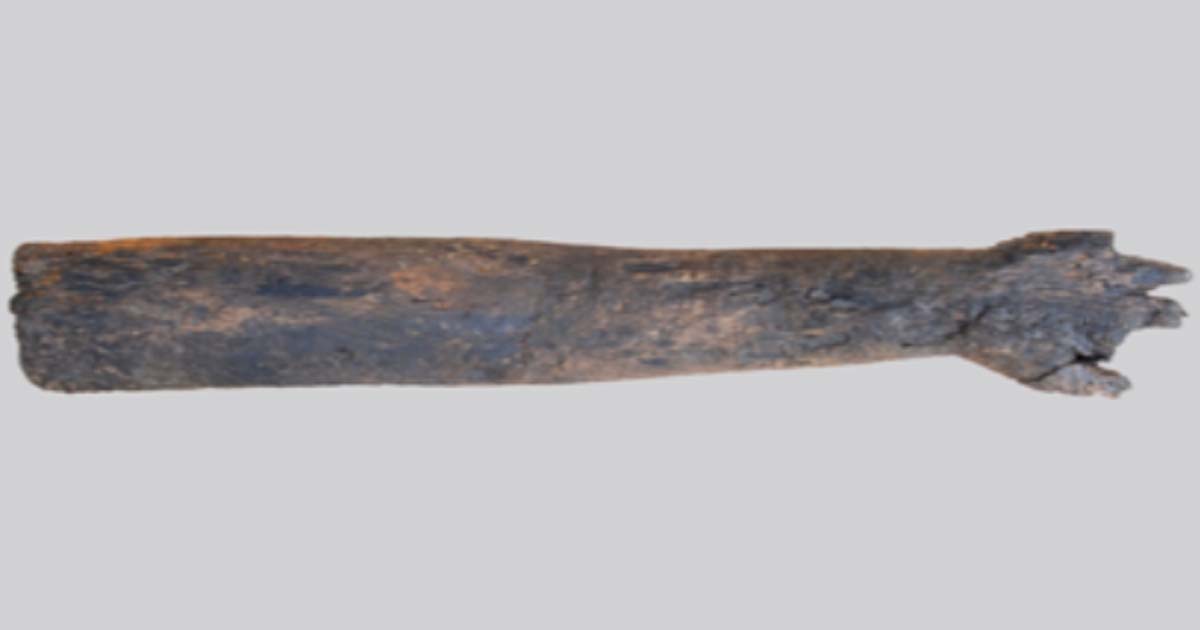Wooden Arm Found in Roman Well in England Is a Real Oddity
Archaeologists in England have made an unusual discovery in a Roman well. They found a wooden arm at the bottom that is remarkably well-preserved and remarkably skillfully carved. This find is one that is providing new insights into Roman Britain and has been hailed as being both of national and international importance.
A Remarkable Wooden Arm
The discovery of the wooden arm was made by the Oxford East Archaeology Company, during an excavation at Warth Industrial Park in Raunds, Northamptonshire. This was a routine excavation as the Industrial Park is being expanded and this area is rich in archaeology.
An ancient henge or circular construction, some 4000 years old is located not far from Warth Park. The archaeologists were working at the bottom of a stone-lined Roman well when they made their discovery.

The stone-lined well which contained the wooden arm. (Oxford Archaeology)
The experts retrieved an almost intact wooden arm. According to the Archaeology News Network it “is a representation of a complete human arm, with an open right hand”. The fingers of the arm are broken but the rest of the wooden arm is in very good condition.
The “waterlogged, oxygen-free conditions in the well preserved the rare sculpture” reports Archaeology.org. The well had been filled to the top and this meant that there was no oxygen which helped to conserve the wooden artifact over the centuries.

Photographs of the four sides of the wooden arm represented in a single image. (Oxford Archaeology © Michael Bamforth / Fair Use)
Experts Study the Wooden Arm
The archaeologists from Oxford East took the arm to the University of York and there it was examined by an expert in ancient wood, Michael Bamforth. He concluded that it was made from a single branch.
According to Archaeology News Network, the carver of the arm used the “natural curve to form the elbow”. It appears that the wooden arm was meant to represent a life-like slender limb of a small adult or juvenile. It was clearly the work of a highly skilled craftsperson.
Interestingly there was no sign of a joint, so it was not attached to a larger sculpture. Archaology.org reported that “there is no evidence that the arm was attached to a larger figure”. It seems that the object was carved solely to represent a human arm.
- More Evidence that Ancient Romans May Have Made It to Oak Island, Canad
- Bronze Age Wooden Wheel Adds to List of Surprising Finds at Must Farm
- Discovered! An Ancient Mongolian Stone Selfie!

A scale illustration of the wooden arm. (Oxford Archaeology)
A piece of the arm was carbon dated and it established that “it was made in the earlier British Roman [period] sometime between 86 and 240 AD”, reports the BBC. Fragments of pottery from the same time period were also found in the well, and this corroborated the finding of the carbon-dating.
Was the Wooden Arm an Offering to a God?
The location of the carved wooden sculpture in the well provides clues as to what the purpose of the arm was and why it was simply discarded. It appears that the carved wooden artifact was a votive offering to some unknown deity. The BBC quoting Bamforth, states that the arm was “in some way significant for votive deposition [religious offering]”.
The offering of the representation of the limb was possibly related to the fulfilment of a vow. It was probably deposited in the well to honor or thank a deity. The practice of depositing carved sculptures of body parts in sacred locations such as shrines was common in the Roman Empire and even later.
There have been other significant finds of wooden representations of limbs and body parts that have been found in continental Europe. However, according to the Oxford Archaeology website, “none of the examples date from the same period as that from Warth Park”. This is what makes the carved wooden arm such an important find. Moreover, not many similar votive offerings have been unearthed in England.

The dig were the wooden arm was discovered was being carried out ahead of further development of the Warth Park Industrial Park. (Oxford Archaeology)
The discovery is as important as it is unusual. It is providing new insights into the religious practices of Roman Britain and indeed the Roman Empire. However, the exact religious reason as to why the wooden limb was deposited in the well is still something of a mystery.
Top image: The wooden arm was found at the bottom of an ancient Roman well. Source: Oxford Archaeology
By Ed Whelan

















